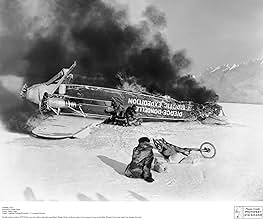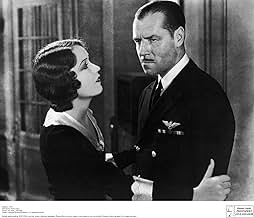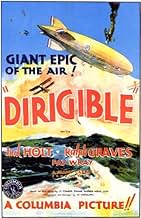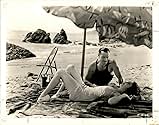Adicionar um enredo no seu idiomaJack Bradon is tasked to reach the South Pole with a dirigible.Jack Bradon is tasked to reach the South Pole with a dirigible.Jack Bradon is tasked to reach the South Pole with a dirigible.
- Direção
- Roteiristas
- Artistas
- Prêmios
- 2 vitórias no total
Emmett Corrigan
- Rear Adm. John S. Martin
- (as Emmet Corrigan)
Richard Alexander
- Radio Operator
- (não creditado)
Bess Flowers
- Party Guest
- (não creditado)
George 'Gabby' Hayes
- Parade Official
- (não creditado)
Edward Hearn
- Admiral's Aide
- (não creditado)
Selmer Jackson
- Lt. Rowland
- (não creditado)
Eddie Kane
- Lakehurst Radio Announcer
- (não creditado)
Kenneth MacDonald
- Lt. Fogarty
- (não creditado)
Adrian Morris
- Dirigible 'Los Angeles' Crewman
- (não creditado)
William H. O'Brien
- Sailor
- (não creditado)
Broderick O'Farrell
- Doctor
- (não creditado)
- Direção
- Roteiristas
- Elenco e equipe completos
- Produção, bilheteria e muito mais no IMDbPro
Avaliações em destaque
While "Dirigible" (1931) is notable as Frank Capra's best early film, the real credit for making something that was both a huge hit during the early years of talking pictures and an old film that will interest even today's jaded action movie fans should go to Editor Maurice Wright. Wright had to assemble this early blockbuster from what Capra shot and what the U.S. Navy provided in the form of stock and promotional footage. He did a great job and you rarely are aware that you watching a movie, let alone a fictional drama.
The story is a historical concoction, mixing elements of Robert Falcon Scott's sledding disaster at the South Pole and Nobile's ill-fated North Pole expedition in the airship "Italia". It is likely the producers of "The Red Tent" (1970) borrowed heavily from Capra's technique when they dramatized the crash of Nobile's dirigible for their film.
The destruction of the fictional dirigible "The Los Angeles" is the most interesting sequence in the film but the Navy's promotional footage is also quite interesting, particularly to viewers 75+ years later. There is extensive coverage of operations on the first USS Lexington; which would be sunk during WWII (The Battle of the Coral Sea). The rest of the simulated action stuff leaves something to be desired but was no doubt quite credible to viewers at the time of the film's release.
I wouldn't pay much attention to complaints that the back-story is lame and boring. It features a pre-Kong Fay Wray. She is younger and has her natural darker hair color. As such, I think you will find her about as beautiful as any actress in film history, especially in profile. Apparently Capra quickly figured out what he had with Wray as he makes extensive use of close-ups during her scenes; a technique that would not really come into fashion until the 1970's. And Wray exhibits considerable acting talent in these scenes, earnestly sincere as the wife of a glory-seeking Navy pilot. And since you can't take your eyes off her, any complaints about scripting and content are pretty much irrelevant.
Then again, what do I know? I'm only a child.
The story is a historical concoction, mixing elements of Robert Falcon Scott's sledding disaster at the South Pole and Nobile's ill-fated North Pole expedition in the airship "Italia". It is likely the producers of "The Red Tent" (1970) borrowed heavily from Capra's technique when they dramatized the crash of Nobile's dirigible for their film.
The destruction of the fictional dirigible "The Los Angeles" is the most interesting sequence in the film but the Navy's promotional footage is also quite interesting, particularly to viewers 75+ years later. There is extensive coverage of operations on the first USS Lexington; which would be sunk during WWII (The Battle of the Coral Sea). The rest of the simulated action stuff leaves something to be desired but was no doubt quite credible to viewers at the time of the film's release.
I wouldn't pay much attention to complaints that the back-story is lame and boring. It features a pre-Kong Fay Wray. She is younger and has her natural darker hair color. As such, I think you will find her about as beautiful as any actress in film history, especially in profile. Apparently Capra quickly figured out what he had with Wray as he makes extensive use of close-ups during her scenes; a technique that would not really come into fashion until the 1970's. And Wray exhibits considerable acting talent in these scenes, earnestly sincere as the wife of a glory-seeking Navy pilot. And since you can't take your eyes off her, any complaints about scripting and content are pretty much irrelevant.
Then again, what do I know? I'm only a child.
Lakehurst, the setting for much of this film was the epicenter of American ballooning and dirigibles, before the second world war and through it as well. A recent book, _They sailed the skies : U.S. Navy balloons and the airship program_ led me to this film, since it represents an easy way to get a look at some of the men and machines in action. Frank "Spig" Wead is the writer and Frank Capra directs. Wead of course was a flyer himself and only turned to writing after a crash broke his neck, crippling him. See WINGS OF EAGLES by John Ford for a dramatization of his life. The early sound era is not known for the sleekness of it's screen story-telling, but if you have interest in the history of zeppelins, or pre-WW2 aviaton, this film is worth watching.
The "7" is strictly for the amazing aerial scenes involving airships or dirigibles (like the Hindenberg that crashed at Lakehurst, N.J.). In fact, all of the aviation moments are skillfully photographed for dramatic effect, especially the fierce electrical storm that destroys one of the dirigibles by pulling it apart in mid-flight.
The romance on the ground is far less convincing than the action sequences involving pilots flying to the South Pole. FAY WRAY is the femme lead, hopelessly in love with hubby RALPH GRAVES and begging his best friend JACK HOLT not to use him on his expedition to the South Pole. She's sick of staying behind and worrying about him and his grandstanding exploits. Unfortunately, none of the domestic scenes between Graves and Wray bear any semblance to reality--her weeping gets pretty tiresome before the plot is resolved.
But FAY WRAY was unquestionably a beautiful woman and director Frank Capra gives her plenty of close-ups. Her role is not particularly well written and she has trouble being anything more than a decorative ploy. RALPH GRAVES is not totally convincing as a reckless pilot. There's an awkwardness about his acting that is somewhat disconcerting here. JACK HOLT handles his role with authority and good screen presence.
A fascinating look at early aviation exploits using dirigibles and balloons when they were seriously considered to be the modern methods of aviation. Well worth watching.
The romance on the ground is far less convincing than the action sequences involving pilots flying to the South Pole. FAY WRAY is the femme lead, hopelessly in love with hubby RALPH GRAVES and begging his best friend JACK HOLT not to use him on his expedition to the South Pole. She's sick of staying behind and worrying about him and his grandstanding exploits. Unfortunately, none of the domestic scenes between Graves and Wray bear any semblance to reality--her weeping gets pretty tiresome before the plot is resolved.
But FAY WRAY was unquestionably a beautiful woman and director Frank Capra gives her plenty of close-ups. Her role is not particularly well written and she has trouble being anything more than a decorative ploy. RALPH GRAVES is not totally convincing as a reckless pilot. There's an awkwardness about his acting that is somewhat disconcerting here. JACK HOLT handles his role with authority and good screen presence.
A fascinating look at early aviation exploits using dirigibles and balloons when they were seriously considered to be the modern methods of aviation. Well worth watching.
Okay, I know, they are not blimps. They are Zeppelins. "Airships" was the preferred term by the U.S. Navy.
This is a very exciting action film for 1931. Apparently made with quite a high budget. I saw model shots, large sound stages filling in for Antartica, thousands of extras, real airships, and a gigantic ticker tape parade shot on location in New York City. All of these things cost much money. The U.S. Navy's use of airships was so brief that this film also marks one of the few stories about this chapter in our military history.
This film proves that Capra was also adept at high intensity action directing (for 1931) as well his usual character-driven morality plays that he became so well-known for.
The one thing that is the most striking to me about (some) early talking pictures, of which this is one, is that they have hardly any music score. This is true here, and only adds to the isolated feeling in the scenes of the doomed expedition struggling to escape from the frozen tundra. Plenty of sound effects in the scenes of the doomed Pensacola going down, but no music. In fact, the film even uses a few silent film style narration cards.
Anyway, in spite of this film dating from 1931, it has aged really well and doesn't seem too dated at all. A nice action/adventure film. The print they showed on TCM on television was in very good shape, even the sound was strong in most places. Yes, the love story seemed tacked on, but there are thousands of films in the history of Hollywood that could have survived artistically with their romantic subplots (probably inserted at the insistence of cigar-chewing studio bosses to get "the female market") jettisoned. In any case, this movie is quite entertaining and Worth checking out.
This is a very exciting action film for 1931. Apparently made with quite a high budget. I saw model shots, large sound stages filling in for Antartica, thousands of extras, real airships, and a gigantic ticker tape parade shot on location in New York City. All of these things cost much money. The U.S. Navy's use of airships was so brief that this film also marks one of the few stories about this chapter in our military history.
This film proves that Capra was also adept at high intensity action directing (for 1931) as well his usual character-driven morality plays that he became so well-known for.
The one thing that is the most striking to me about (some) early talking pictures, of which this is one, is that they have hardly any music score. This is true here, and only adds to the isolated feeling in the scenes of the doomed expedition struggling to escape from the frozen tundra. Plenty of sound effects in the scenes of the doomed Pensacola going down, but no music. In fact, the film even uses a few silent film style narration cards.
Anyway, in spite of this film dating from 1931, it has aged really well and doesn't seem too dated at all. A nice action/adventure film. The print they showed on TCM on television was in very good shape, even the sound was strong in most places. Yes, the love story seemed tacked on, but there are thousands of films in the history of Hollywood that could have survived artistically with their romantic subplots (probably inserted at the insistence of cigar-chewing studio bosses to get "the female market") jettisoned. In any case, this movie is quite entertaining and Worth checking out.
A reasonably decent motion picture for its time, the one attribute that makes this film stand out from its standard storyline, is its footage and scenes regarding dirigibles. When this film was released in 1931, it was the golden age of zeppelin travel, and the crash of the Hindenburg, which doomed this type of transportation, was still five years in the future. There were numerous scenes shot at Lakehurst Naval Air station, where ironically the Hindenburg crashed, that was the center of dirigible activity at the time for the U.S. Navy. As someone who is interested in this subject, I found this part of the movie fascinating as well as the part of the story that took you behind the scenes of airship travel and how much danger could be involved. The riveting scene dealing with the crash of a dirigible in a violent storm brought to mind the U.S. Navy zeppelin Akron, launched the same year as this film, which was destroyed in a similar storm only two years later. It was also interesting to see actress Fay Wray two years before she would gain fame with her role in King Kong. I had the opportunity to catch this film recently during an airing on the TCM cable channel and would recommend it for anyone with a similar interest.
Você sabia?
- CuriosidadesThe production was shot during a California heat wave. To form vapor on the breath and give the impression that the pilots were in the Antarctic, the performers were given lumps of 'dry ice' (frozen carbon dioxide) in metal boxes to put in their mouths. Hobart Bosworth found the box cumbersome and simply put the ice in his mouth. He lost his tongue and most of his lower jaw.
- Erros de gravaçãoThe name of this Dirigible was the USS Pensacola but there was already a USN heavy cruiser of the same name that was in service since 1928 when this movie was made. The Navy does not assign duplicate names to ships/air ships in service at the same time.
- ConexõesFeatured in Frank Capra's American Dream (1997)
- Trilhas sonorasAnchors Aweigh
(1906) (uncredited)
Music by Charles A. Zimmerman
Lyrics by Alfred Hart Miles and R. Lovell
Played during the opening credits and often in the score
Sung by guests at a party
Principais escolhas
Faça login para avaliar e ver a lista de recomendações personalizadas
Detalhes
Bilheteria
- Orçamento
- US$ 1.000.000 (estimativa)
- Tempo de duração1 hora 40 minutos
- Cor
Contribua para esta página
Sugerir uma alteração ou adicionar conteúdo ausente






































